My 100-year-old home has a shady yard. The trees have had a long time to grow, and the beautiful tree canopies cast a lot of shade. It took me a couple of years to figure out what grows in the shade and what I like. There are beautiful perennials that thrive in the shade.

Finding shade plants that pretty sometimes requires you to be a visual learner. An uninspiring plant at the store can surprise you and be beautiful in your garden as an early spring bloomer. This Brunnerea macrophylla for example, has the prettiest little flowers early in the spring.
Sources for ideas and inspiration
One of the best sources of shade plant inspiration has been visiting my neighbors' shade gardens. I'll share a few of those shade gardens featuring plants that like partial to full shade. Sometimes it's where it's planted in relation to other plants or structures in the garden that make them stand out.
I've been inspired by so have planted the occasional perennial shade planter in the past and will do more this summer. There are quite a few shade annual plant combinations in this Window box Ideas post if you are looking to plant a shade planter.
Shade perennials
It should be noted that my yard is in the USDA Horticultural Zone 5 in Wisconsin. Perennials in my area need to be able to survive a pretty tough winter!
Below is my favorite shade garden! Looking down at this garden, you will see many shade-loving plants. Because of the tall trees and the privacy fencing, this is a shady yard. But it is pretty and serene!
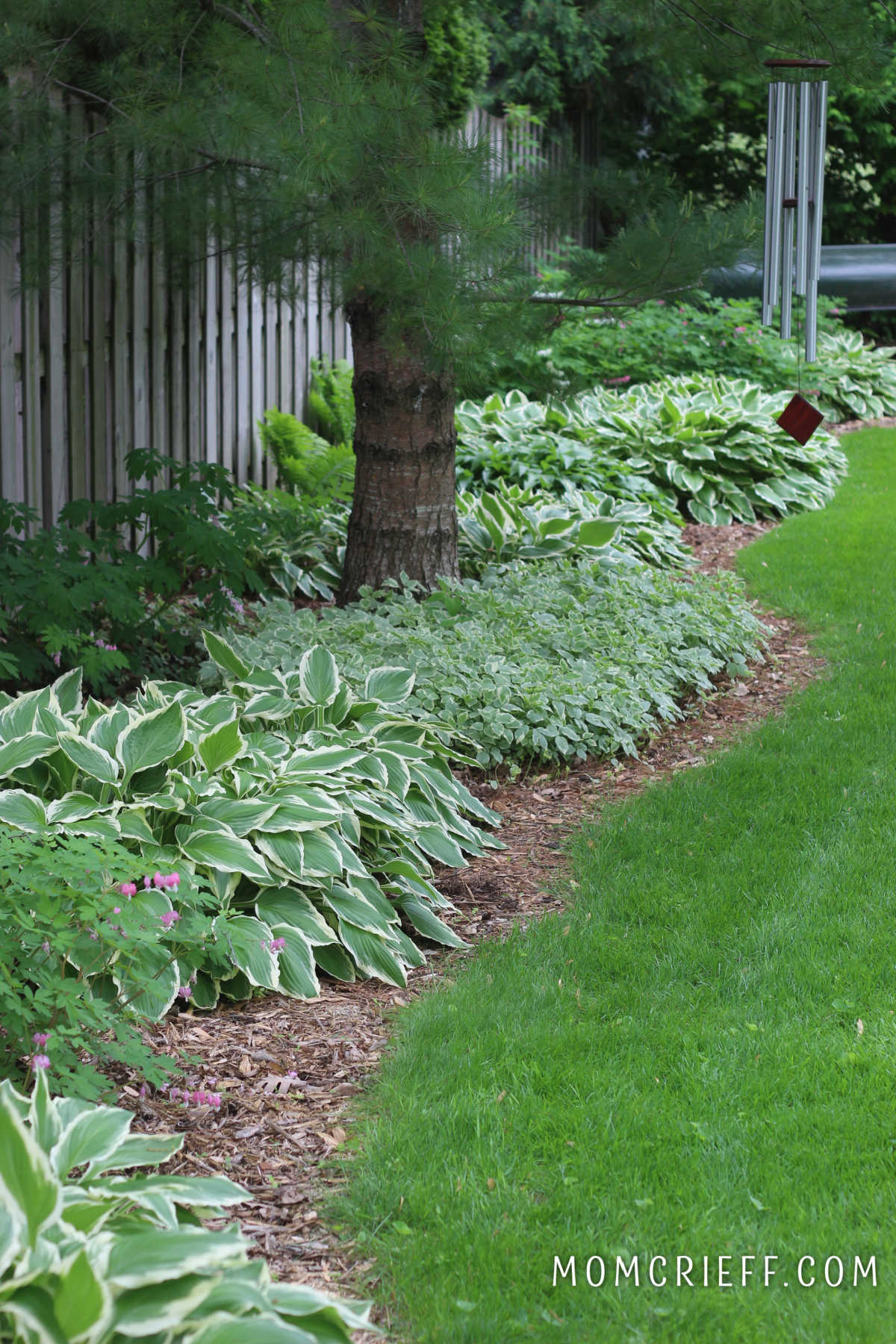
I also look for inspiration for my appropriate plants during walks in nature. The trillium flower is beautiful! but don't pick it.
Picking a wild trillium flower can often kill this woodland shade plant. This one has to be purchased from a nursery!
Table of contents
- Sources for ideas and inspiration
- Shade perennials
- Hostas with different colors and leaf sizes
- Simple variegated hostas
- Fancier hostas
- Bleeding Hearts
- Columbine
- Annabelle Hydrangea
- Tickseed Coreopsis
- Ferns
- May Apples
- Solomon's Seal
- Trillium
- Begonia
- Wild Geraniums
- Lambs ear
- Impatiens
- Wandering Dude
- Lungwort
- Coral Bells
- Variegated Jacob's Ladder
- Ligularia
- Sea Heart or Silver Heart
- Lamb's Ear
- Astilbe
- Bellflower
- Anemone
- Autumn Joy Sedum
- Coleus
- Snow on the Mountain, aka Bishop's Weed or Bishop's Goutweed
- Wood Violet
- Siberian Squill
- Lily of the Valley
- Sweet Woodruff
- Dogwood Shrubs
Hostas with different colors and leaf sizes
Some think hostas are boring. They have not seen a hosta garden planned and installed so that hostas can be the focal plant in one area and then used as backdrops to other plants. When hostas are planted with a purpose, they are interesting and beautiful! There is such a large variety.

These leafy plants can be such a beautiful monochromatic display of interesting foliage. There are many types of hostas of varying colors (yes, usually variations of green, yellow, and white leaves). Hostas also have tall purple flowers. If the spent stocks aren't to your taste, they can easily be cut down. When they flower, they are pretty. Take a few minutes at the end of summer to remove the spent stalk and a leaf or two that doesn't look good. You will have a neat-looking plant again with minimal effort.
These plants are often a beautiful backdrop to other plants or textures in your garden. Hostas are actual shade-loving plants and thrive where other plants won't.
Simple variegated hostas
These are some of the most common types. I hadn't even moved into my current home, and a neighbor came over with a box of these! I knew I moved to the right place! Hostas can be split and shared easily.
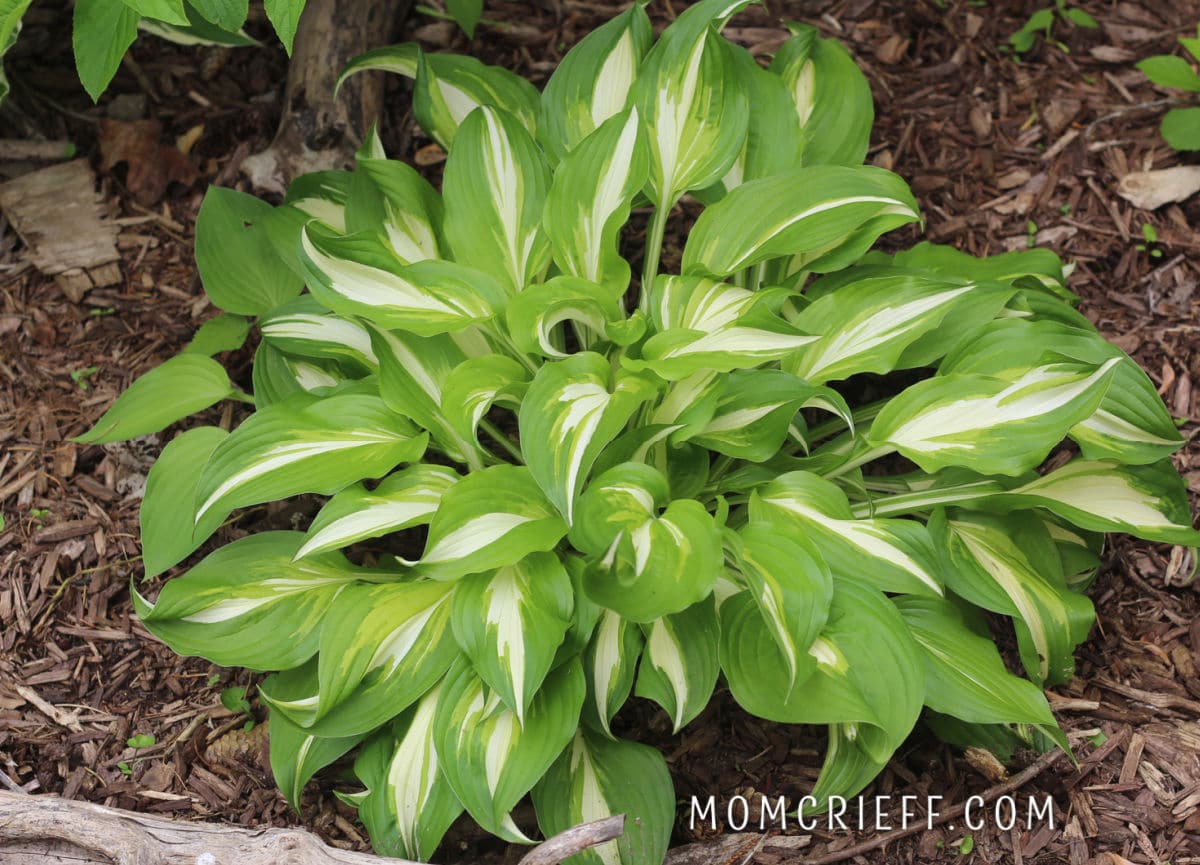
Variegated hostas often have white on the inside OR the outside. These are the ones people talk about not being able to kill. They survive under woodpiles for years. Or grow in compost piles. They add a pretty color contrast to parts of the yard that don't get much sun.
Fancier hostas
I have some large-leaf blue-colored hostas, and I love them! One of the most common is called the Blue Angel Hosta. It grows in zones 3-8. I have it growing in dappled sun, which is perfect for this hosta. It grows well in partial sun to full shade. Many hostas are shade-loving perennials that brighten the yard's darker areas.

I think this image helps you see the pretty blue color of this hosta! This shows some of the variations of colors and patterns available.
Bleeding Hearts
Bleeding hearts (dicentra spectabilis) come in quite a few varieties. These truly are my favorite perennial shade flowers! Probably because they flower in the spring. The name comes from the shape of the flower. This shade perennial grows in zones 3-9 and likes partial sun to full shade. However, I see it growing well in full sun, too (even though it's considered a shade plant).
These are such pretty plants, and their only downfall (in my opinion) is that they bloom and look pretty only in the spring. These die back in late spring/early summer but are one of the first spring perennials to bloom.
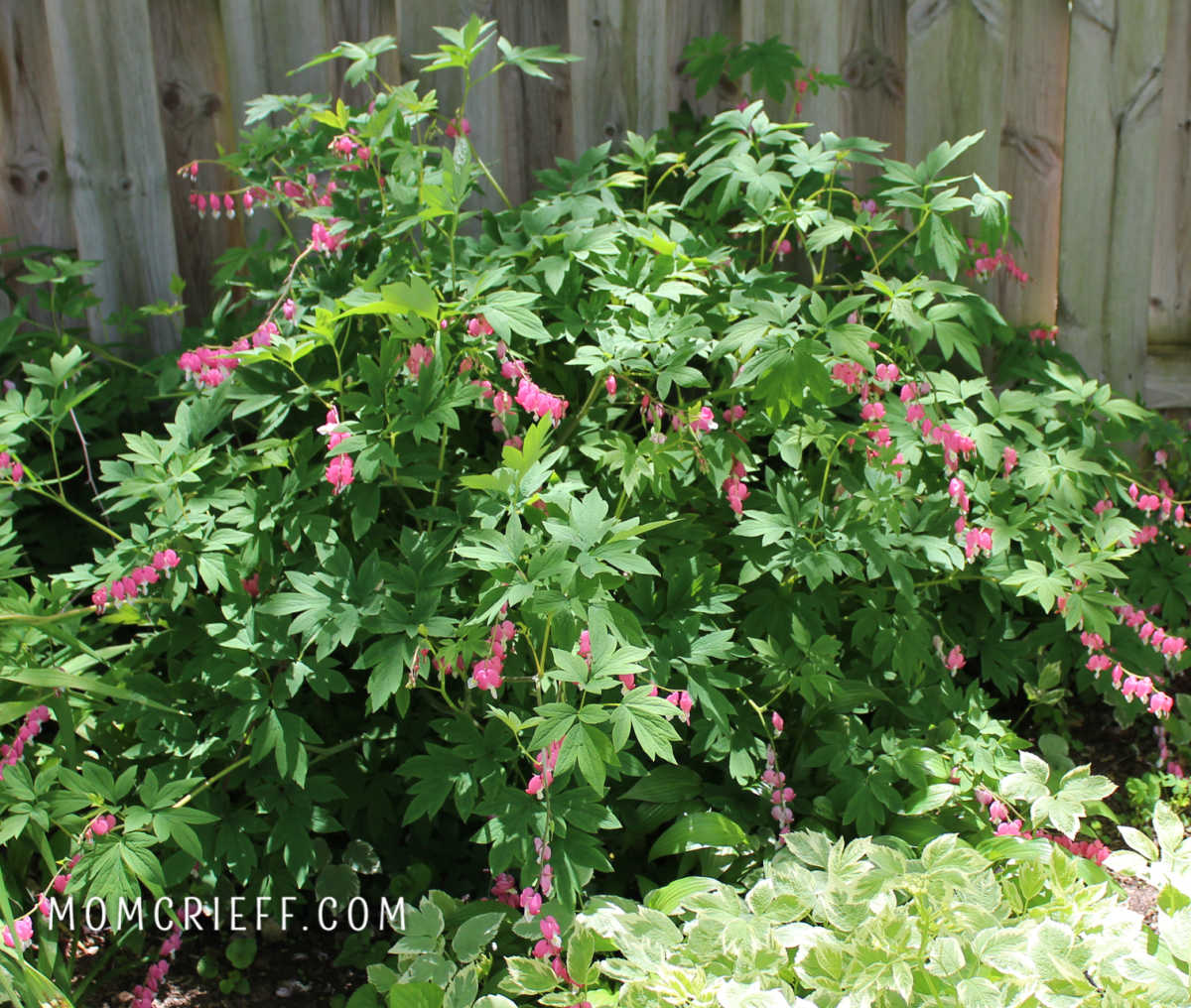
Below is a closeup of the flowers. This is what everyone loves about this bleeding heart plant/flower! This pink is the most common color but comes in white and red also. I've heard there is a purple one, but I haven't seen it (yet!).
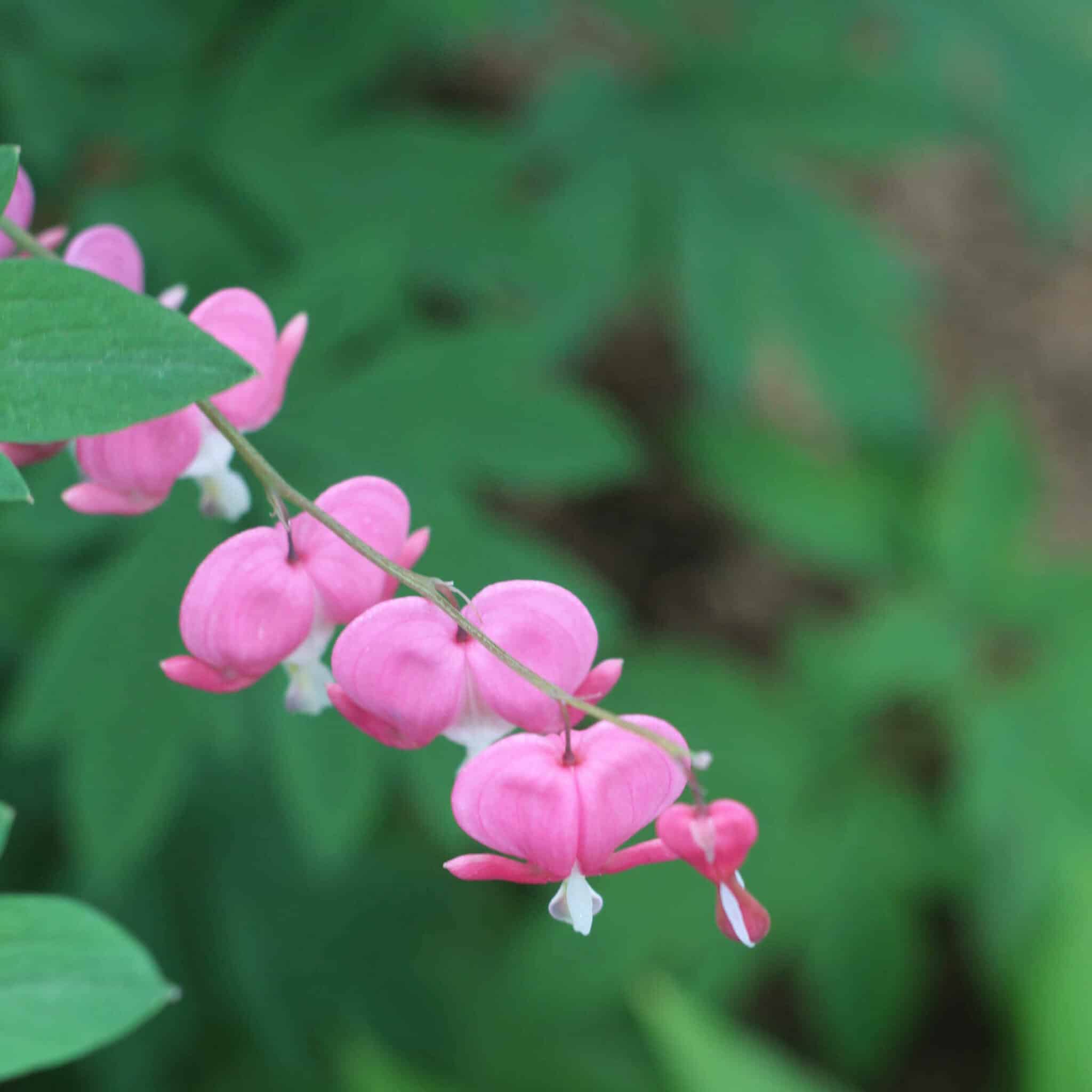
See the pretty fuchsia-colored heart-shaped flower with what looks like a tear on the bottom?
Columbine
There are so many types of columbine (Aquilegia) that grow in many different environments. Ensure you buy a perennial that grows in the shade like these beauties. You also want to make sure it's zoned for your area.
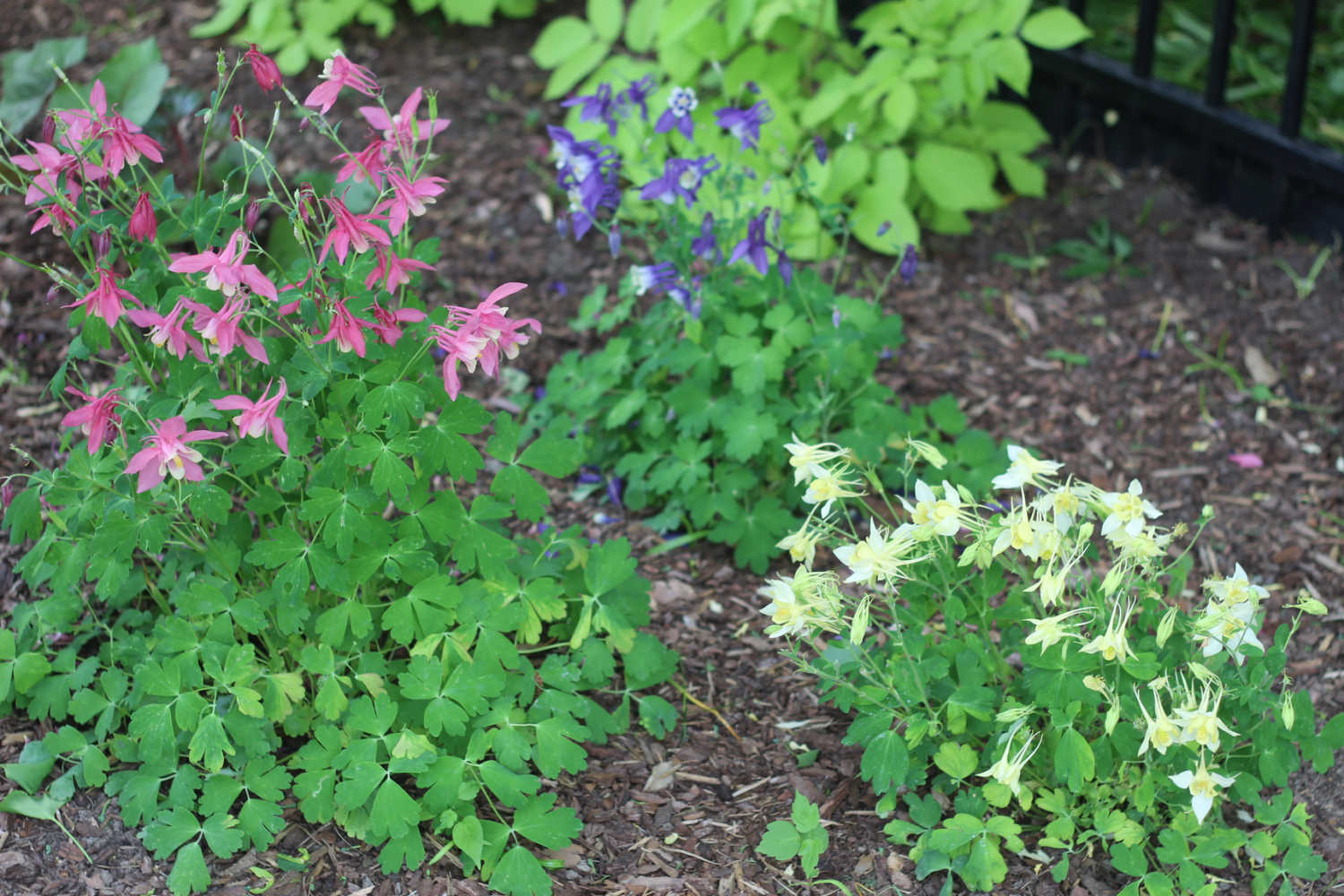
I love the flowers, and here is a close-up of the purple one. This is another example of flowers that like shade!
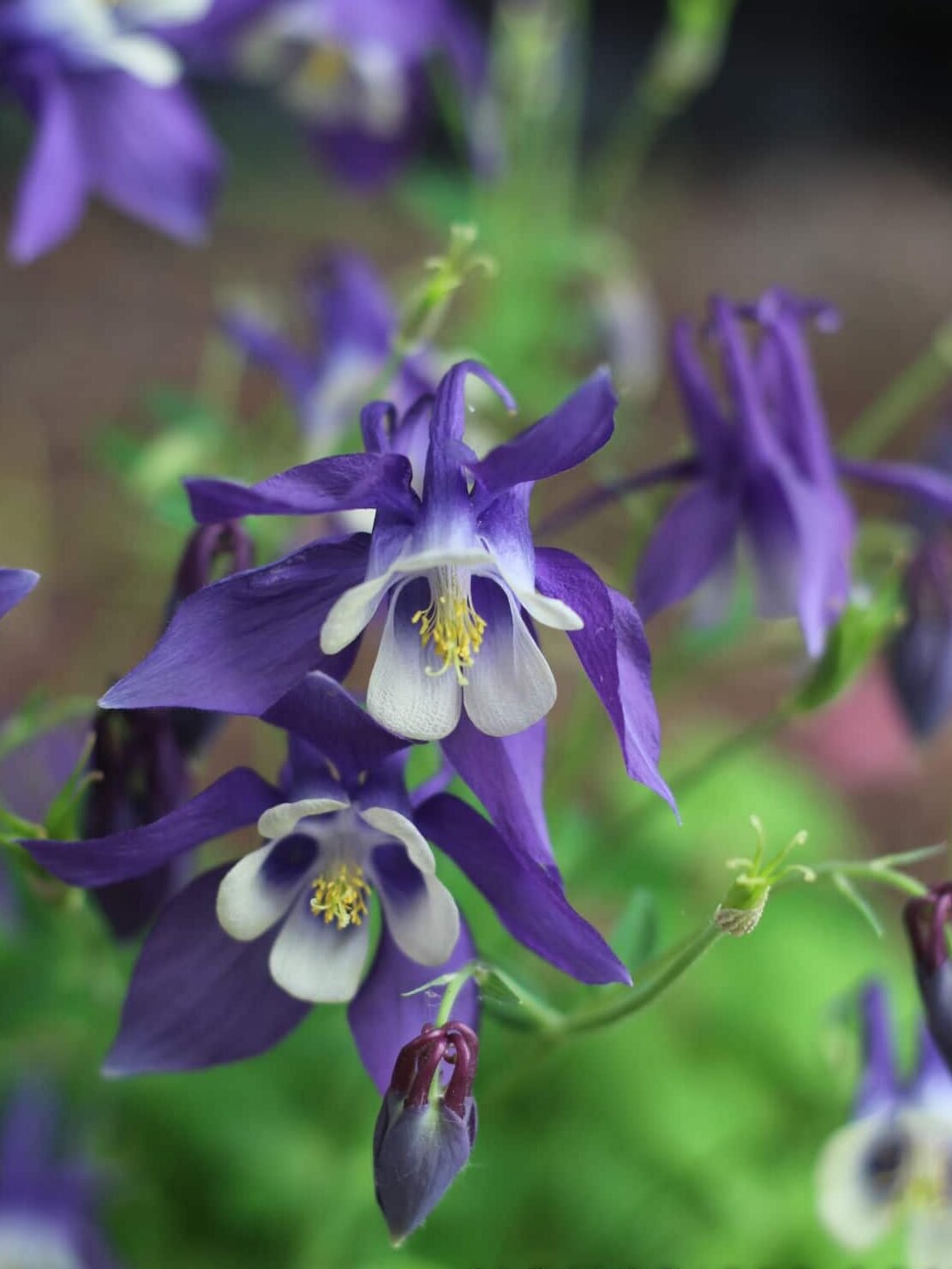
Annabelle Hydrangea
When I moved into my house a few years ago, it was the scary house on the street. The landscaping was out of control, including the hydrangeas! They had taken over my lawn and flopped over my narrow shared driveway.
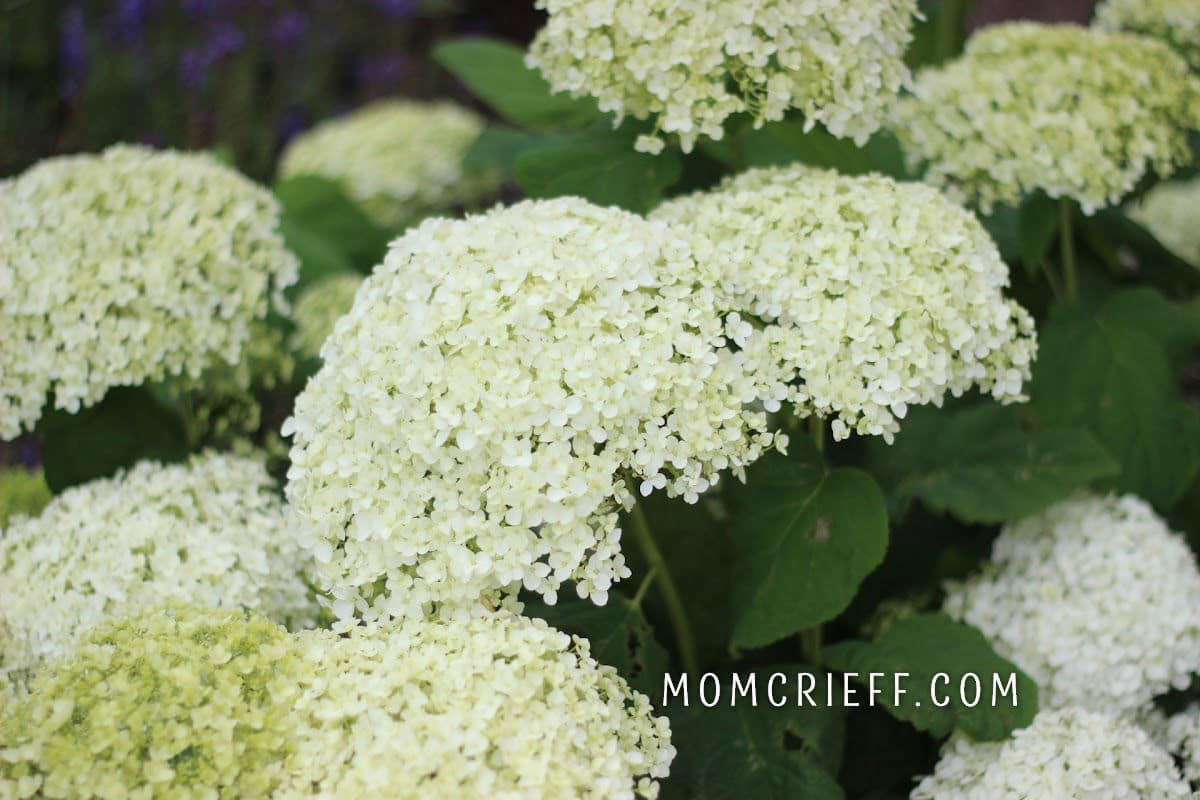
They are now under control, and I LOVE them! These are the old-fashioned white Annabelle hydrangeas. Mine only get a few hours of morning sun and then have afternoon shade. I have tried these in shadier areas of my yard, and they bloom but not as early as the ones that get more sun. These plants are pretty hardy and are rated zones 3 - 9.
These are fabulous flowers to dry! I have fun with painting them in the fall when they dry - spray paint hydrangeas.
These pretty flowers are quite drought-tolerant once established!
Tickseed Coreopsis
This plant is officially a sun plant. I've had it in a partial shade location, and this plant's tolerance for shade is better than expected. It only had a couple hours of the morning sun, then shade for the rest of the day. It's rated for zones 3-10. These are excellent perennials for shade that bloom all summer. This one is happy with a fair amount of shade as long as it's doing well with the soil.
I love the texture of the foliage! A very easy plant to take care of!
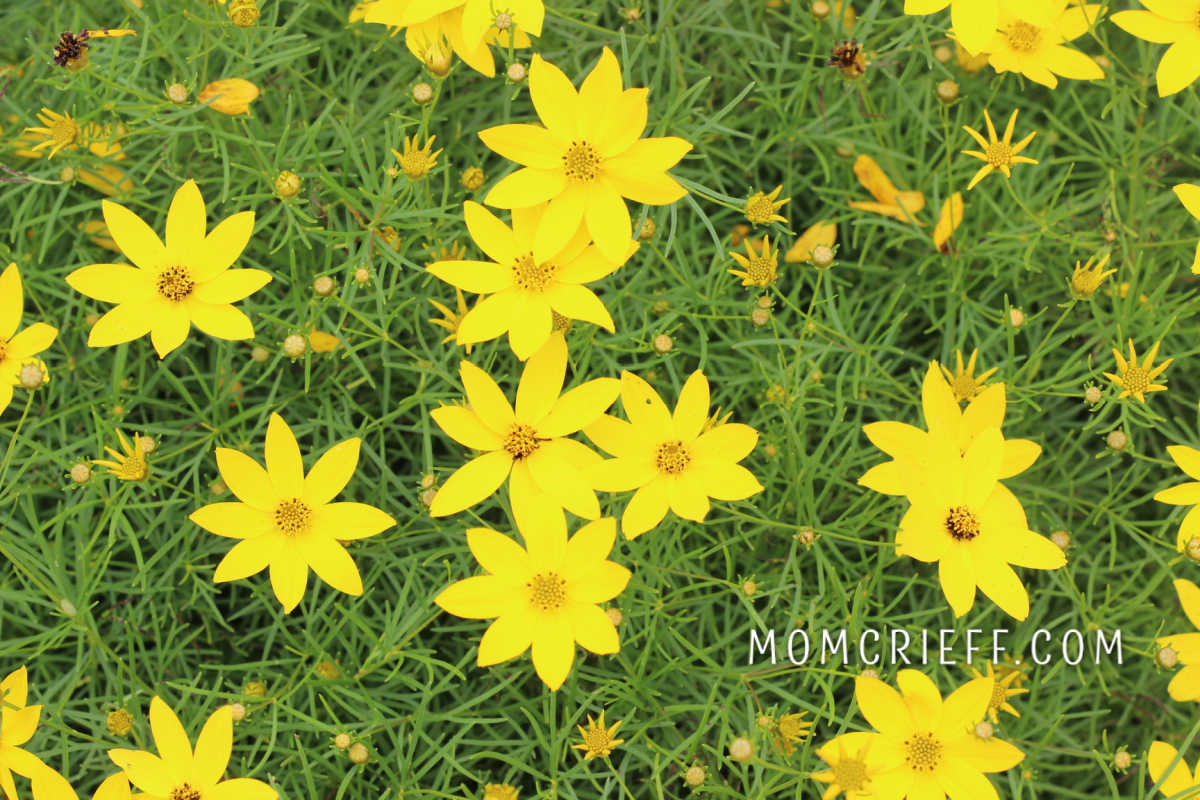
Ferns
Ferns are a traditional shade plant. Most of the ferns in my yard are ostrich ferns (Matteuccia struthiopteris). They are lovely in more moist soils and grow well in USDA hardiness zones of 3-7. Some people don't like how ostrich ferns spread, but I love it. I find these are such a pretty backdrop to my shade plants. Many fern types exist, so choose the ones that do the best in your area. Neighbors, local online resources, or local nurseries can guide you about this.

I love little baby ferns and watch for them in the spring. At this stage, they are called fiddleheads. Some ferns are edible, and fiddleheads can be pretty delicious! They taste similar to spinach to me.
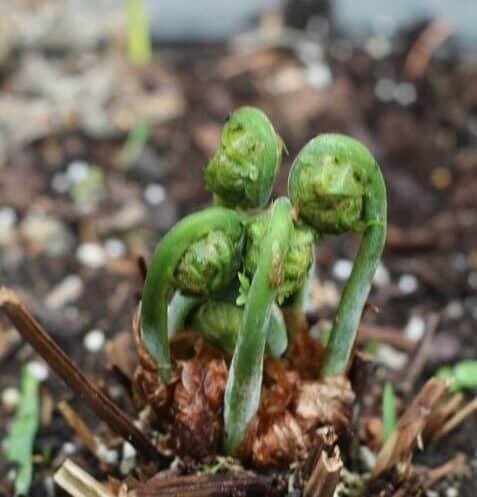
May Apples
I have a corner of my yard with quite a few different trees and a natural woodland area, as far as plants are developing. I LOVE seeing these local plants growing.
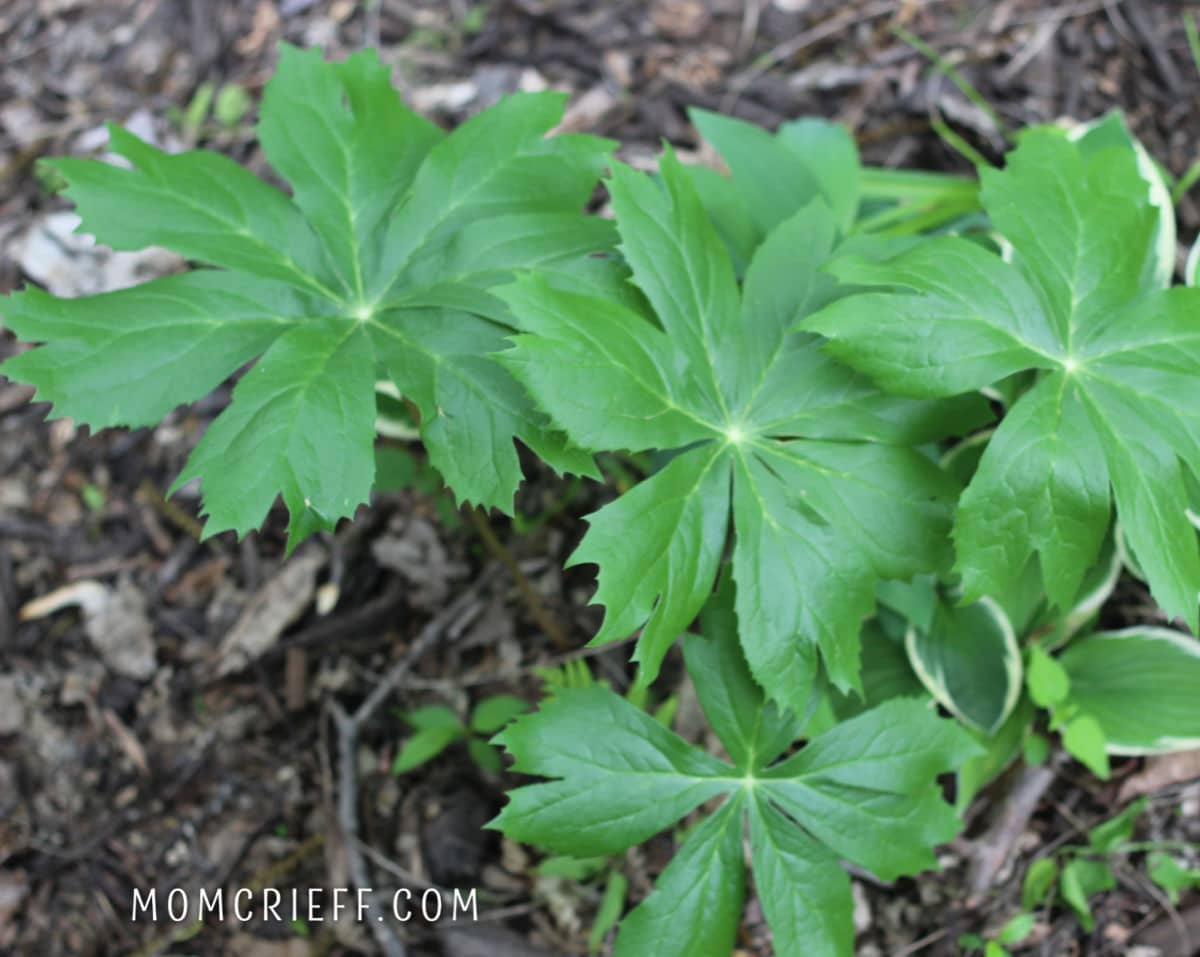
The May Apple (podophyllum peltatum) grows in zones 3-9 in partial sun to shade areas and likes moist but well-drained soil. It does bloom and has a flower resembling a strawberry flower under its leaves.
Solomon's Seal
Another volunteer woodsy plant that showed up in my garden is Solomon's seal (Polyganatum). It grows in zones 4-6 (but some species of this plant can tolerate 3-9). This grows right by my May Apples in moist, well-drained soil.
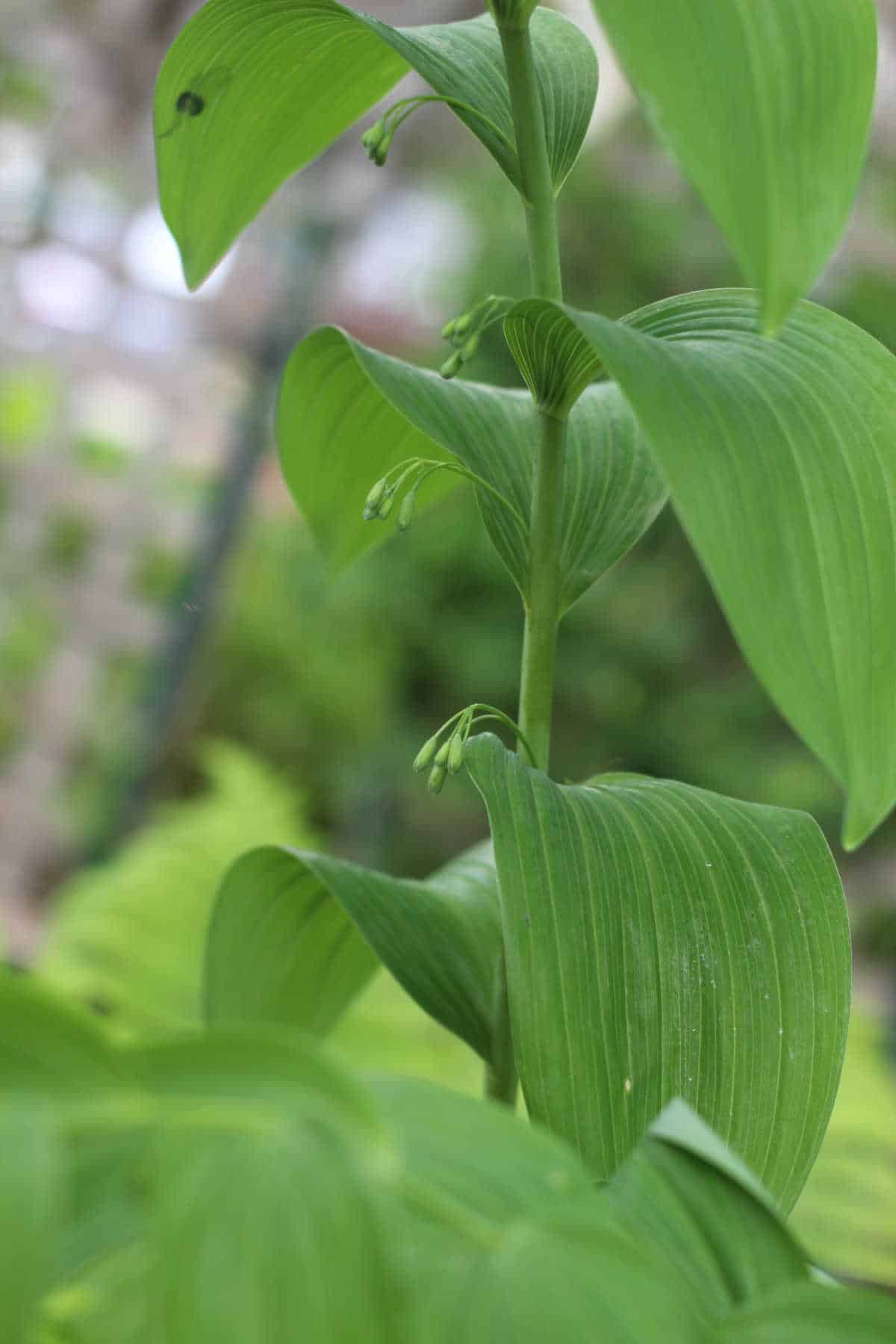
The flowers grow underneath the leaves and can easily be missed. The flowers on this plant are still forming but will have a pretty white line of flowers in a few days.
I held this plant straight up to see where the buds were forming.
Trillium
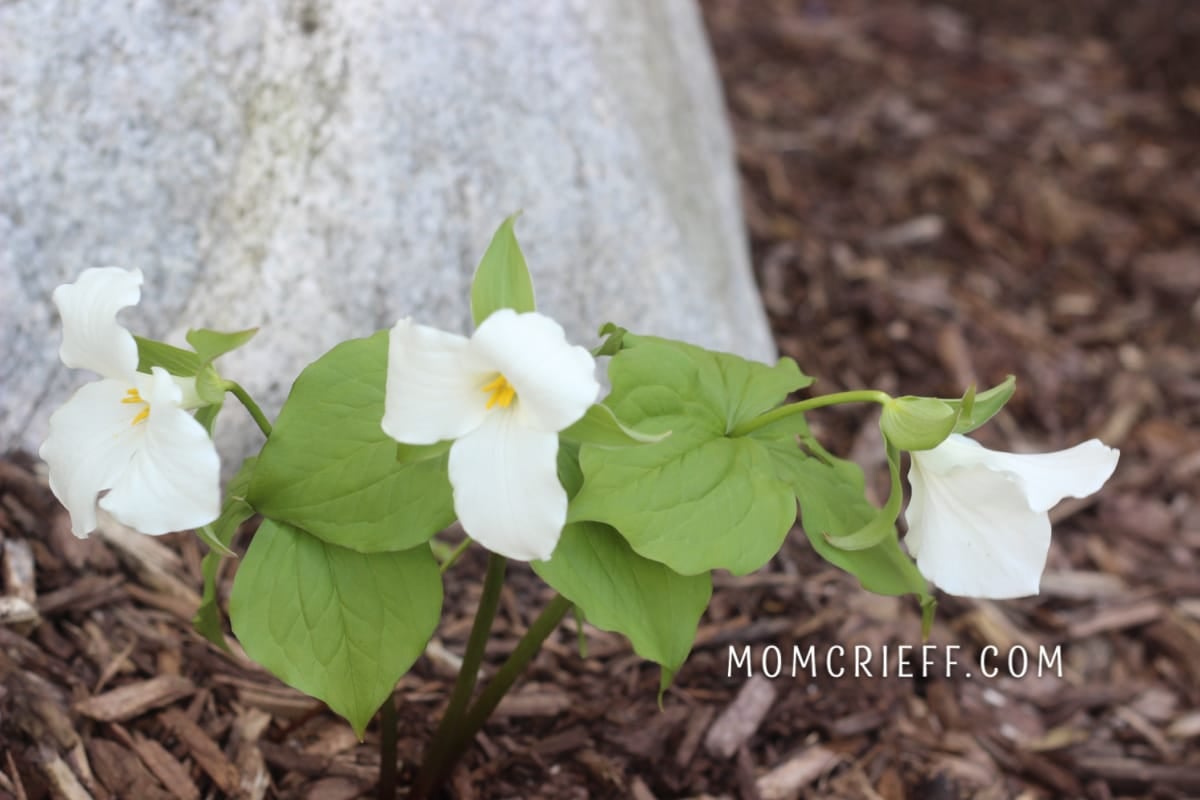
It is illegal in many areas to transplant trilliums (trillium grandiflorum) from public land to your garden. I was able to buy nursery-grown trilliums at a former home but haven't been so lucky where I live now. They often sell out very early in the season. I've also only been able to buy white ones. Apparently, they can have red, pink, and even yellow blooms! Trilliums bloom in the spring to early summer and prefer part-shade-to-shade growing environments.
Begonia
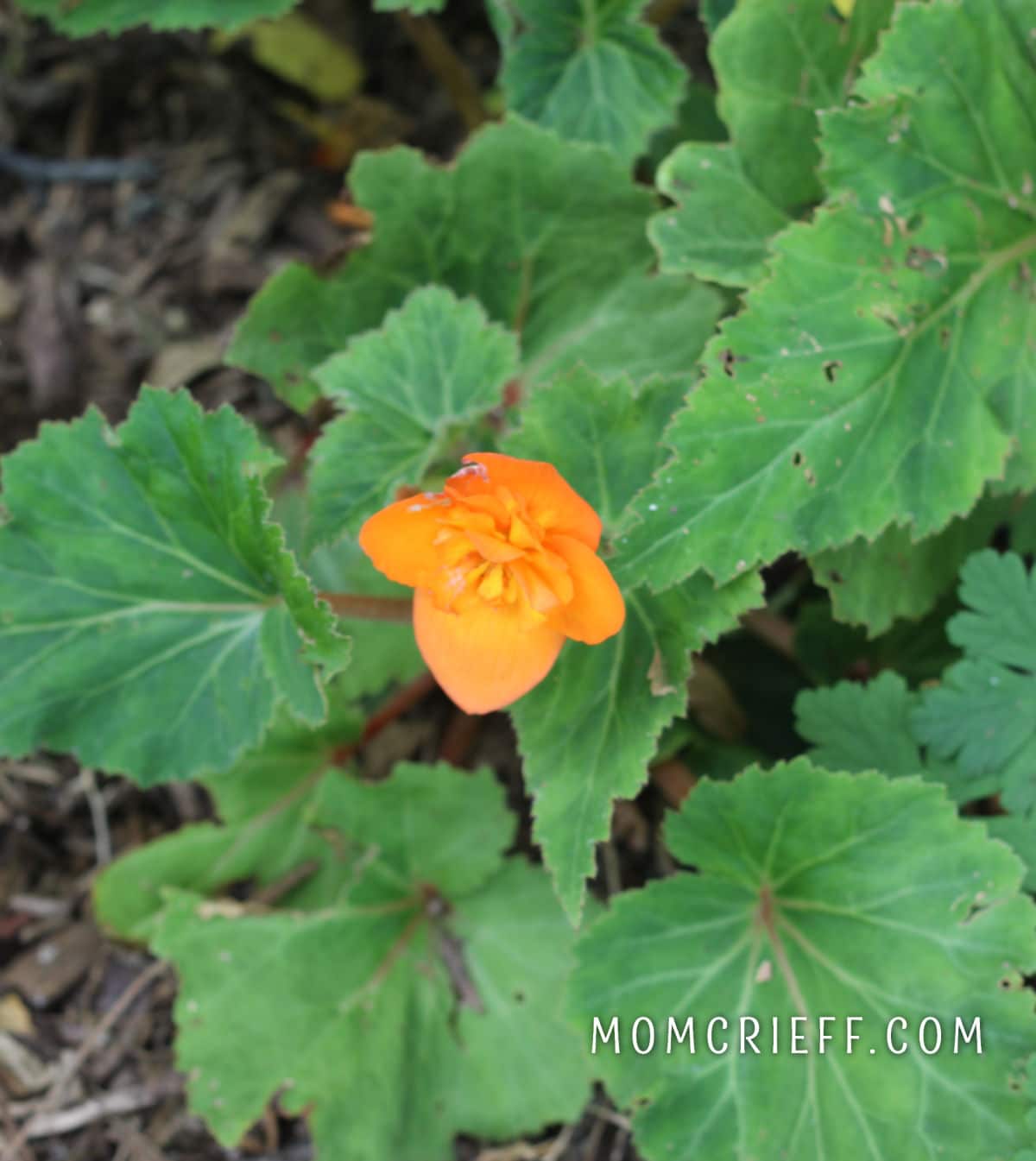
In my zone (5), this is an annual. However, it has pretty flowers, grows well, and flowers in the shade. Some begonias have tubers that you can save and overwinter inside. This specific begonia I'm showing below does have tubers that need to be dug out in the fall. I do it because it's such a pretty orange! Others are treated like houseplants and keep them in a pot to overwinter. Most people purchase this plant annually if they are planting outside in the garden. For year-round gardening, they are a zone 9-10. They don't tolerate frost, that's for sure.
Wild Geraniums
One of the easiest to care for plants in my shade gardens is the wild geranium, which I've also heard called cranesbill and hardy geranium. Wild geranium (Geranium maculatum) grows in USDA hardiness zones 3-8. These are native North American plants. That's why they probably grow so quickly and spread well but are easy to pull if they spread too much. These are such easy-to-grow flowering plants for shade. The bees love them! Once finished blooming, I trim them back and am often rewarded with a second flush of blooms.
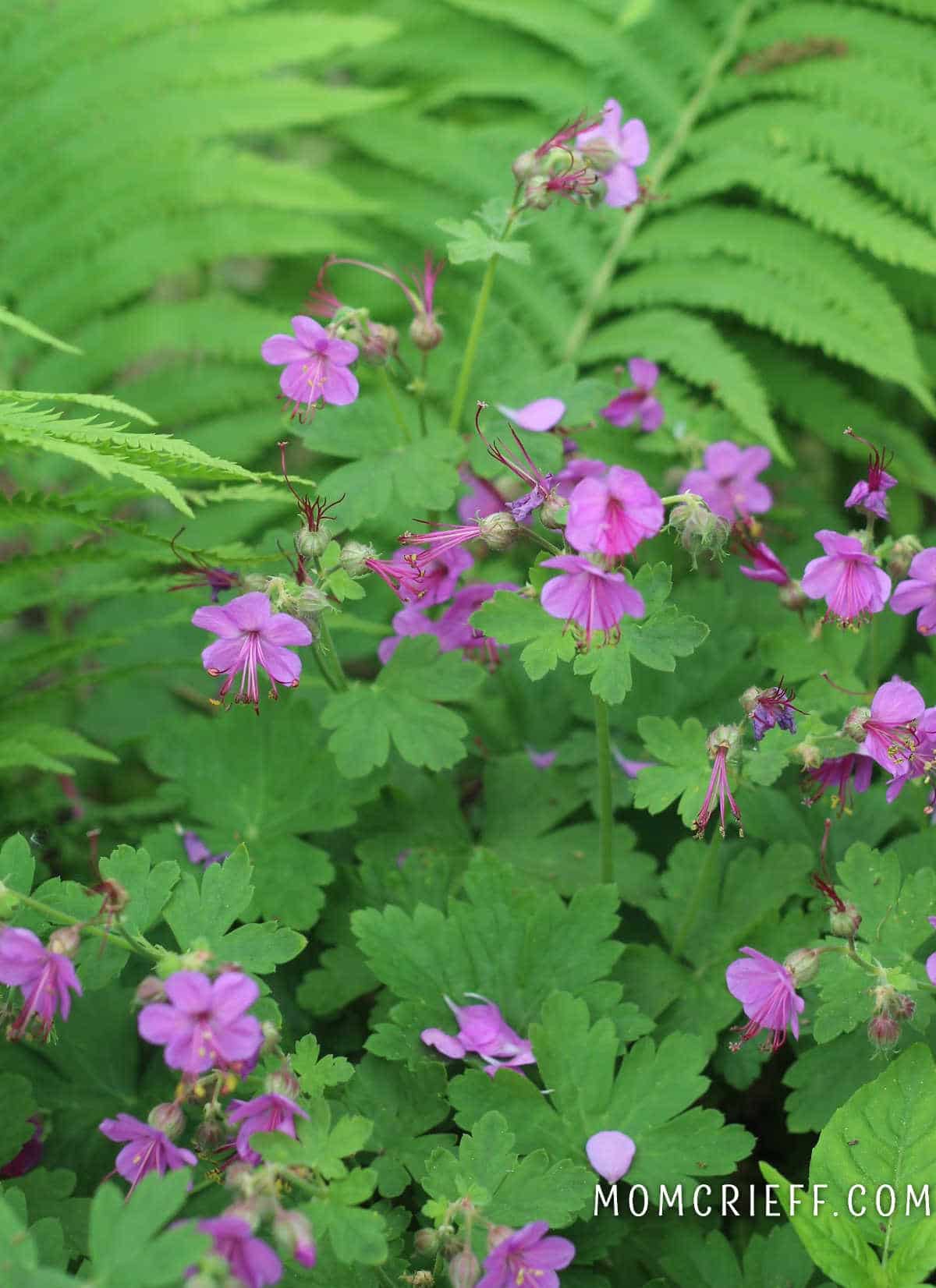
Lambs ear
I love the color and texture of this plant. It is a silvery sage color with a soft, fuzzy feel (like a lamb's ear). There are a few different kinds of lambs' ears, but the kind I have and am writing about is known as Stachys byzantine and grows in USDA hardiness zones 4-8. This plant thrives in full sun. However, I have been planting it in shadier areas of my yard. It's doing well in the partial shade areas of my garden. This ground cover does spread but is easy to contain by pulling plants where you don't want them. It has pretty purple flowers that contrast nicely with the silvery leaves.
Impatiens

Impatients (Impatiens walleriana) are one of the most popular flowering plants for shadier areas of the yard. It will not tolerate frost and has a zone rating of 10-11 (which means it's an annual elsewhere). Partial shade (with a couple of hours of sun) is ideal for these plants, but they will also grow in full shade. If they don't get much sun, they will have fewer flowers. This plant has different colored flowers, including white, red, pink, coral, and purple. I've heard that there is a yellow one now but have never seen it (but I'm looking!!).
This plant is so popular because of the many ways it can be used. It can grow in gardens or also in containers. Isn't this pretty beside a walkway?
Wandering Dude
This is a plant with many names. It is commonly known as a wandering Jew, but some consider that name inappropriate. I've also seen it called an inch plant. Officially it is a tradescantia zebrina, and I always thought of it as a houseplant, but I am seeing it growing more and more in containers. It's zoned as a 10 - 11 and is considered an annual elsewhere. I'm sure some have it as an annual in their gardens, too (give me time, I will!).
This plant is often an indoor hanging plant with beautiful purple foliage with silver stripes. It would also be a perfect 'spill' plant for your outdoor container garden in shadier spots. As a houseplant, it likes bright light but NO direct sun. Outdoors it would be much more of a shade plant due to this tendency. Some gentle morning sun would be fine, but it won't do well with the afternoon sun.
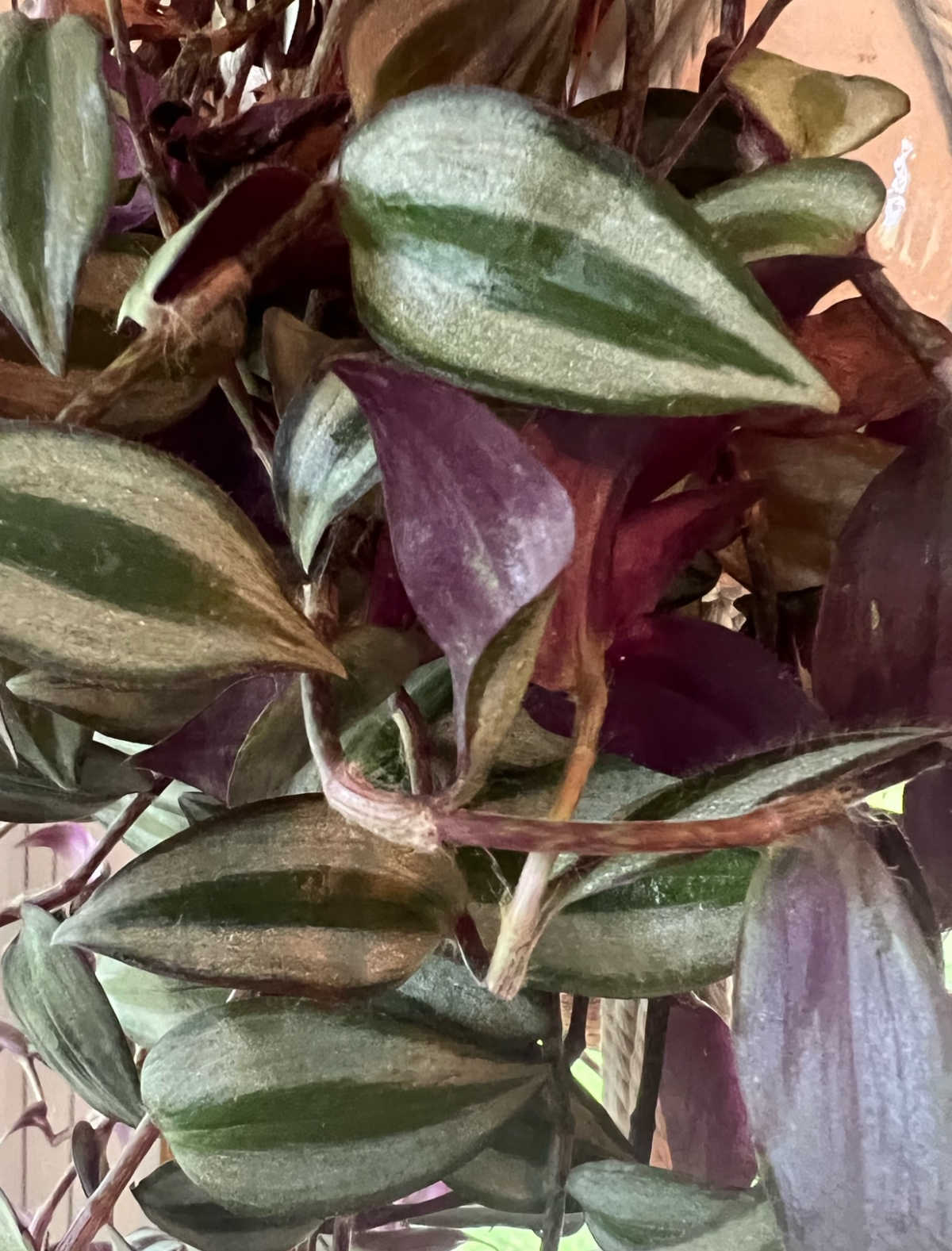
Lungwort
It's the foliage that I like. The leaves of the lungwort (Pulmonaria) are a lovely dark green with white spots. This plant flowers early in the season, often blue or pink (purplish). Sometimes it's white. This plant grows in USDA zones 3-9. Lungwort likes shade, and one of the things it's known for is its ability to grow under a black walnut tree. It is immune to the juglone that the black walnut tree excretes into the soil.

Coral Bells

Coral Bells (Heuchera) come in many different colors. They have spikey flowers; most are grown for their leaves, not their flowers. I know some people love their coral bell flowers, but I haven't seen those specific ones. Coral Bells is a hardiness zone of 4 - 9. If you buy some of these, make sure you buy a color that stands out against your mulch. Or at least contrasts with plants that are planted close by.
Variegated Jacob's Ladder
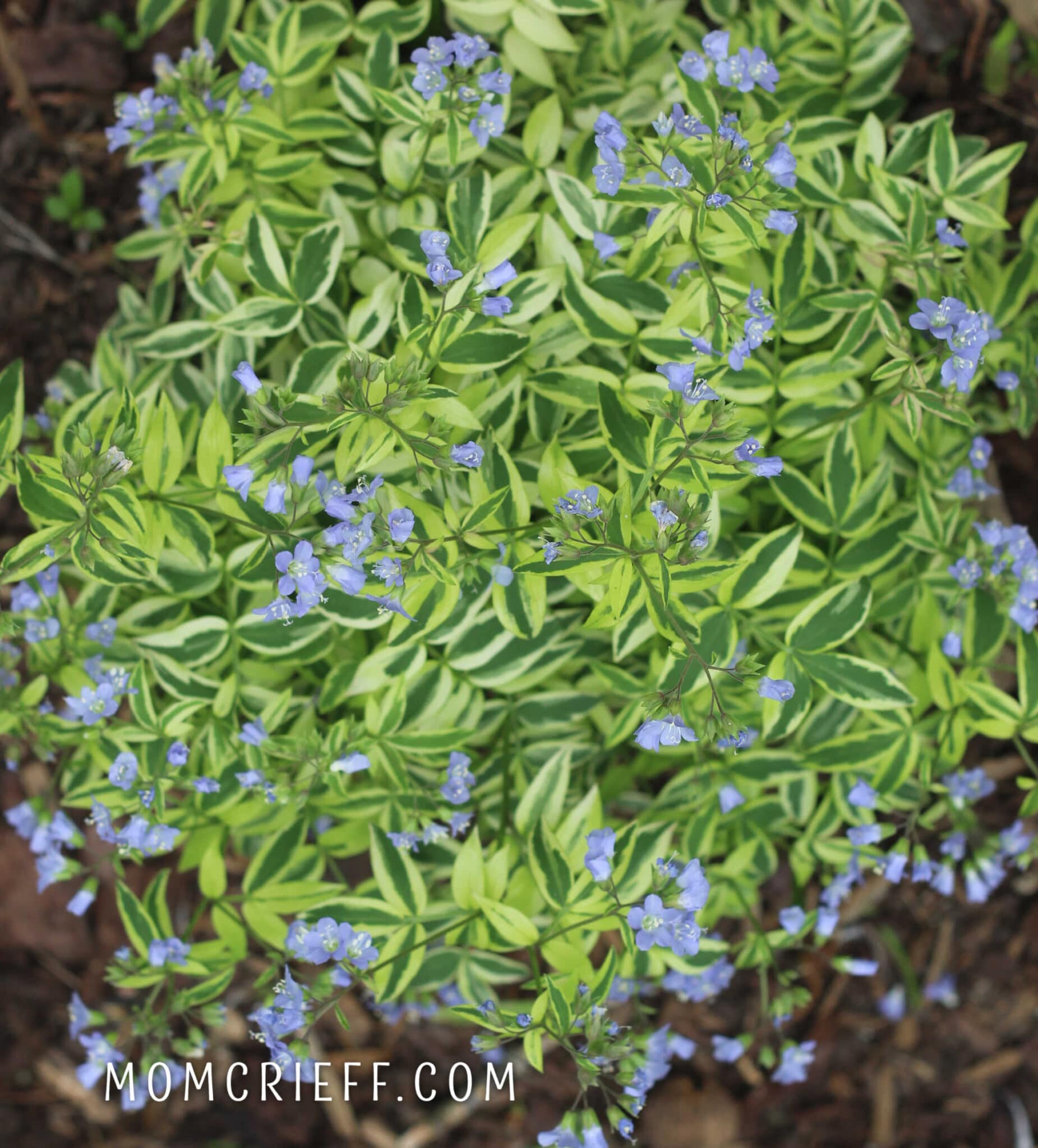
I was in love with this version of Jacob's ladder (Polemonium) the first time I saw it in my neighbor's yard. It looks delicate, but it's a zone 4-8. The tag said it was deer-resistant and attracted butterflies. The staff person at the nursery said the bunnies in her yard didn't eat them. The variegated leaves and the delicate purple flowers made me want to buy this one. It's a perfect shade plant!! This plant is known to be partial to full shade. So, definitely no afternoon sun!
Ligularia
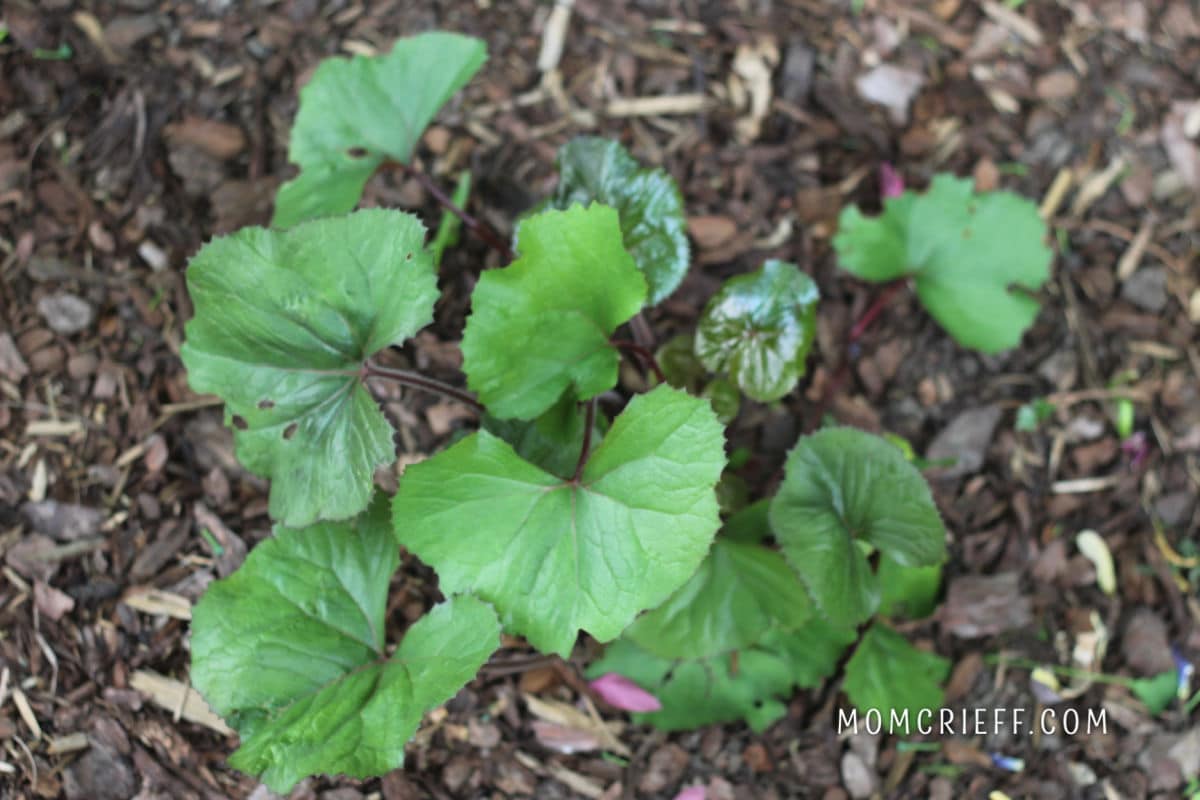
I saw the plant but have not yet seen it blooming. That didn't stop me from buying it! The one I have is called "The Rocket and has a big yellow spikey flower. It's quite the show-stopper flower! I also love that it's a zone 3-9. This should have no problems with local winters!
Sea Heart or Silver Heart
I added this separately, but these are also common names for brunnera plants!
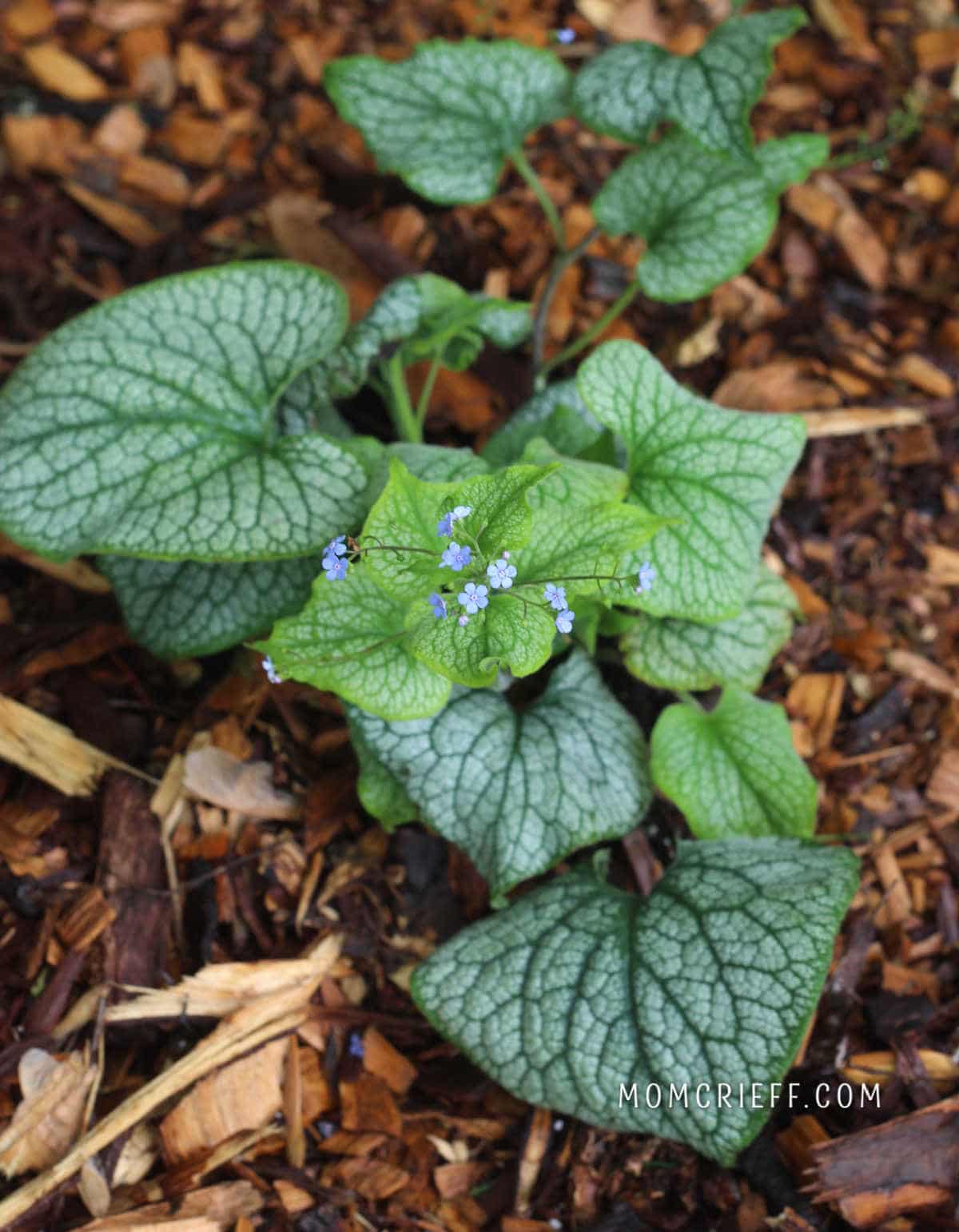
This beautiful plant (Brunnera macrophylla) is a perennial that grows in USDA zones 4-9. It has beautiful big silvery leaves, and it's the leaves that make this plant stand out. It does have these pretty blue flowers. It is a shade-to-part-shade plant. I've heard great things about how it grows!
Lamb's Ear
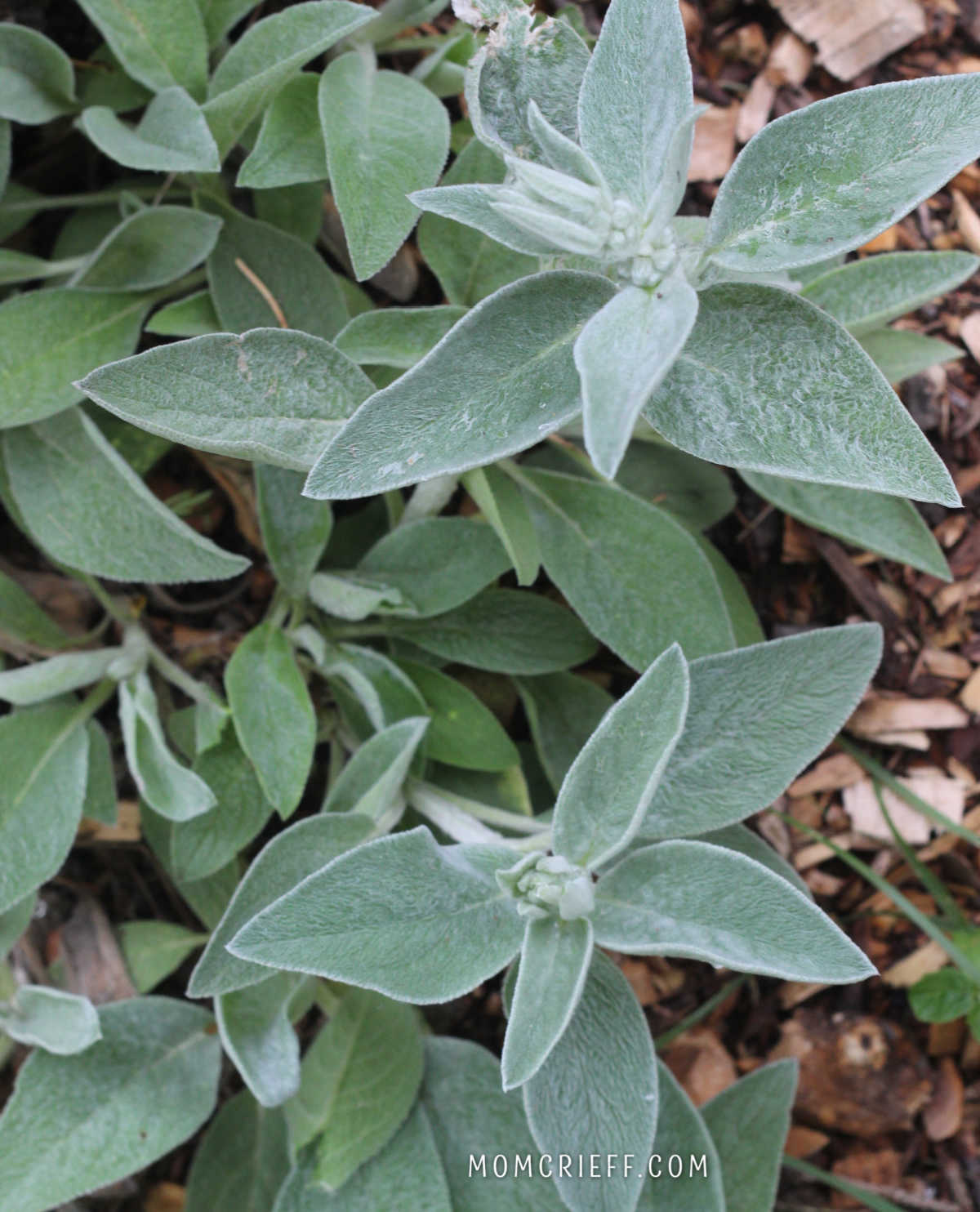
Lamb's ear (stachus byzantine) is a tough little perennial that grows in zones 4-8. This plant is a silvery light green with soft, velvety leaves. It's because of the softness of the leaves that this is my favorite. I do love it as a groundcover, but I will warn you that it does spread. I find it easy to contain any plants that are where they shouldn't be pulled up easily. There are pink/purple flowers on a taller stem, and I've found bees seem to enjoy these flowers.
Astilbe
Astilbes are beautiful blooming plants that technically are in the sun to part shade. I've seen it do quite well in part shade, but it doesn't flower well in full shade.

I've seen these placed where it gets morning and early afternoon sun, and the flowers are beautiful! If the plant does not get enough sun, it won't flower. This is one I experiment with, putting it in areas that are a little shadier, and it does well.
Bellflower
Bellflowers can be annuals or perennials, depending on what you purchase. The one I have is a USDA zone 3-8, so it is a perennial. It is a pretty low-growing ground cover. It can grow in the sun or shade. It does best in the sun but can also do fine in the shade if the plant is happy. I keep it deadheaded to keep it blooming.
Anemone
The name of this Anemone was "pretty Lady Susan." I 100% bought it because my name is Susan! Gardening should be fun and personal, right?
I'm looking forward to seeing what it does in the summer.

This is a partial shade plant with a zone hardiness of 5-9. Although I am in zone 5, buying plants in my zone is risky because if winter is colder than average, plants won't survive. I'll have to report back as to how Susan does this summer! It should have pink blooms on its mounded leaves.
Autumn Joy Sedum
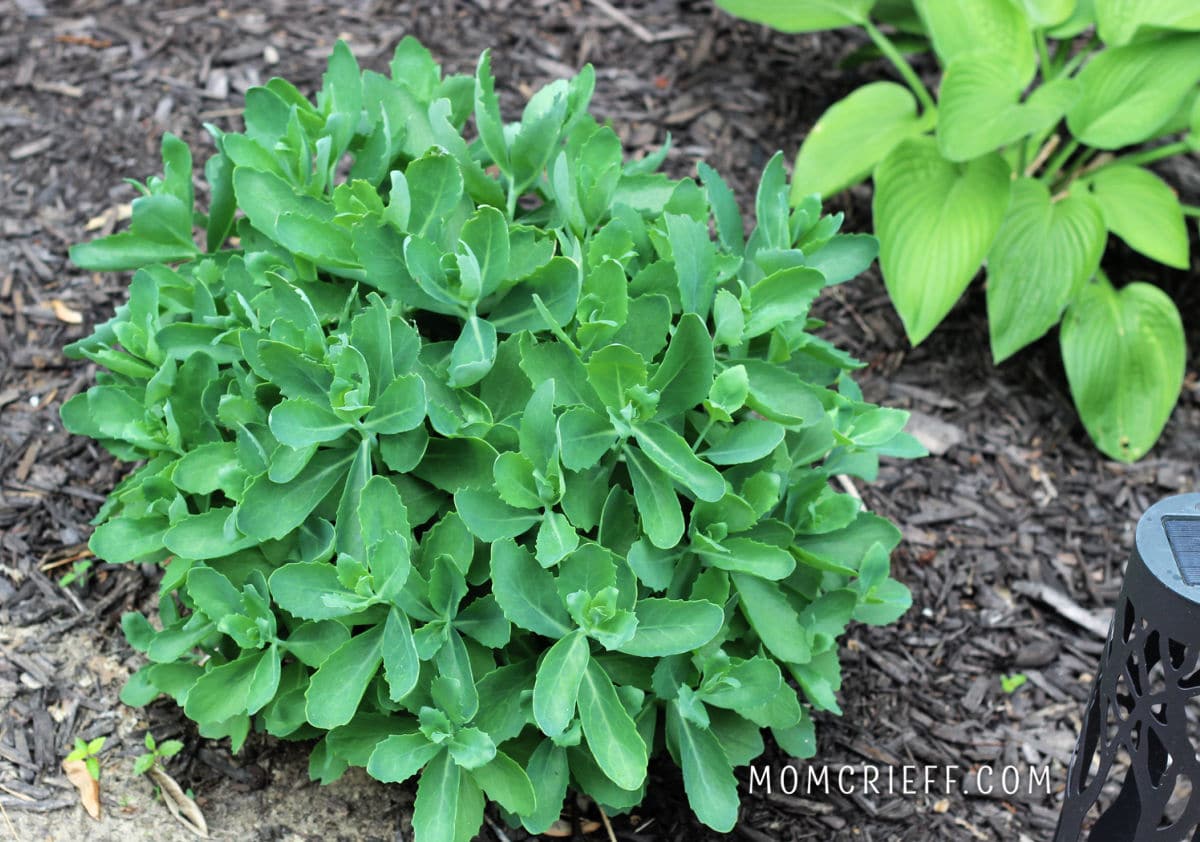
This Sedum 'Autumn Joy' is a classic plant I've grown for over 30 years. It is technically a full to partial sun and rated a USDA zone 4-7. But, I've grown it in part shade, and when I've propagated too many, some have ended up in almost full shade.
The part shade ones do well, but they get a little leggy. The ones I've put in full shade are slower to flower. I've written a post about growing and propagating (easy!) this plant. If you want to know more, follow the blue link to a post about Autumn Joy Sedum.
Coleus
This plant has so many varieties and such beautiful, vivid colors. And it's great in the shade!
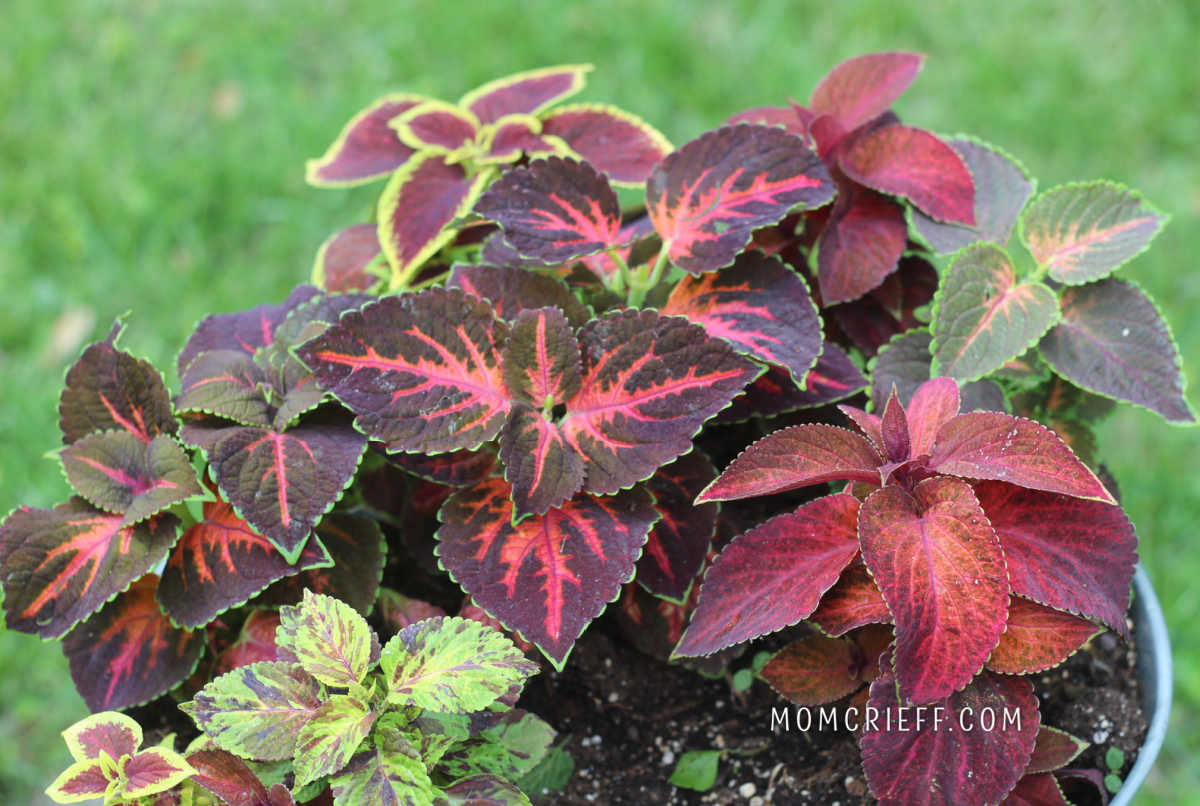
Just to be clear, this is an annual (or can be taken in as a houseplant). It is a zone 11 plant as an annual. There are many varieties, and the sunlight requirements vary from full sun to full shade. Most do well in partial shade, and I have never had an issue planting coleus where it gets a bit of sun but is in the shade most of the day.
I LOVE the various colors of the leaves (I have green, yellow, pink, burgundy, white, and purple this year). Usually, I plant a planter full of various colored coleus and some between my hostas (for a punch of color). It makes my hosta landscape a little more interesting to look at. These are definitely foliage plants, as their flowers usually are not pretty.
Snow on the Mountain, aka Bishop's Weed or Bishop's Goutweed
If you don't like someone, give them some of this! Four years later, I'm still fighting this one. If a tiny piece of root is left in the ground, it will grow! It is also invasive and hard to keep contained unless you are willing to spend almost daily time keeping this one contained. DO NOT PLANT. The scientific name for this is Aegopodiaum Podagraria, whose USDA hardiness zone is rated at 3 - 9. It looks pretty and is often variegated. When grown from seed, even from a variegated plant, it can be just green. It is pretty, will grow in the most challenging conditions (including shade), is difficult to eradicate, and is invasive. This plant is such an issue because if it gets into our woodlands, it will choke out our native woodland plants.
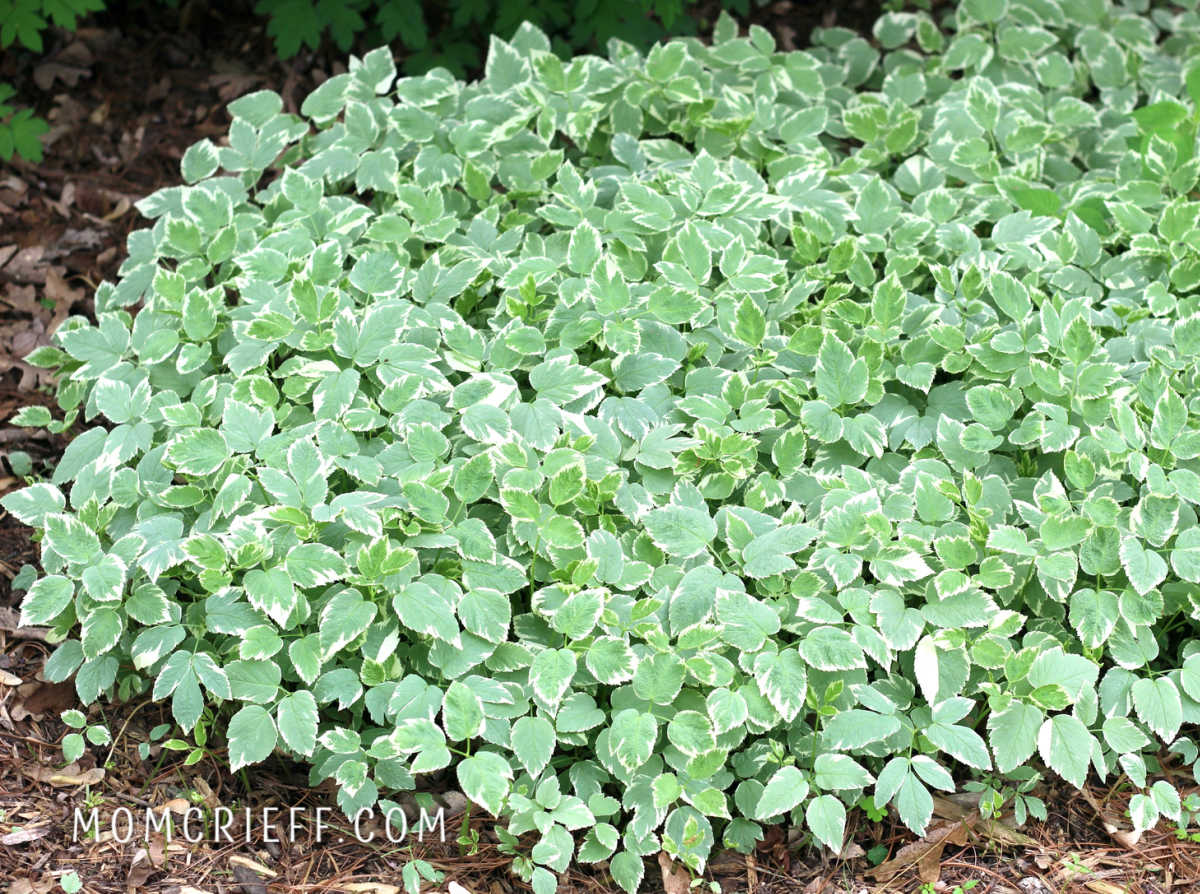
The Bishop's week is to the right of the trunk. If you have it in your gardens, aggressively work to keep it under control. If you don't have it yet, don't plant it. You and your neighbors will regret it!

This is a very thick (and I think pretty) ground cover.
Wood Violet
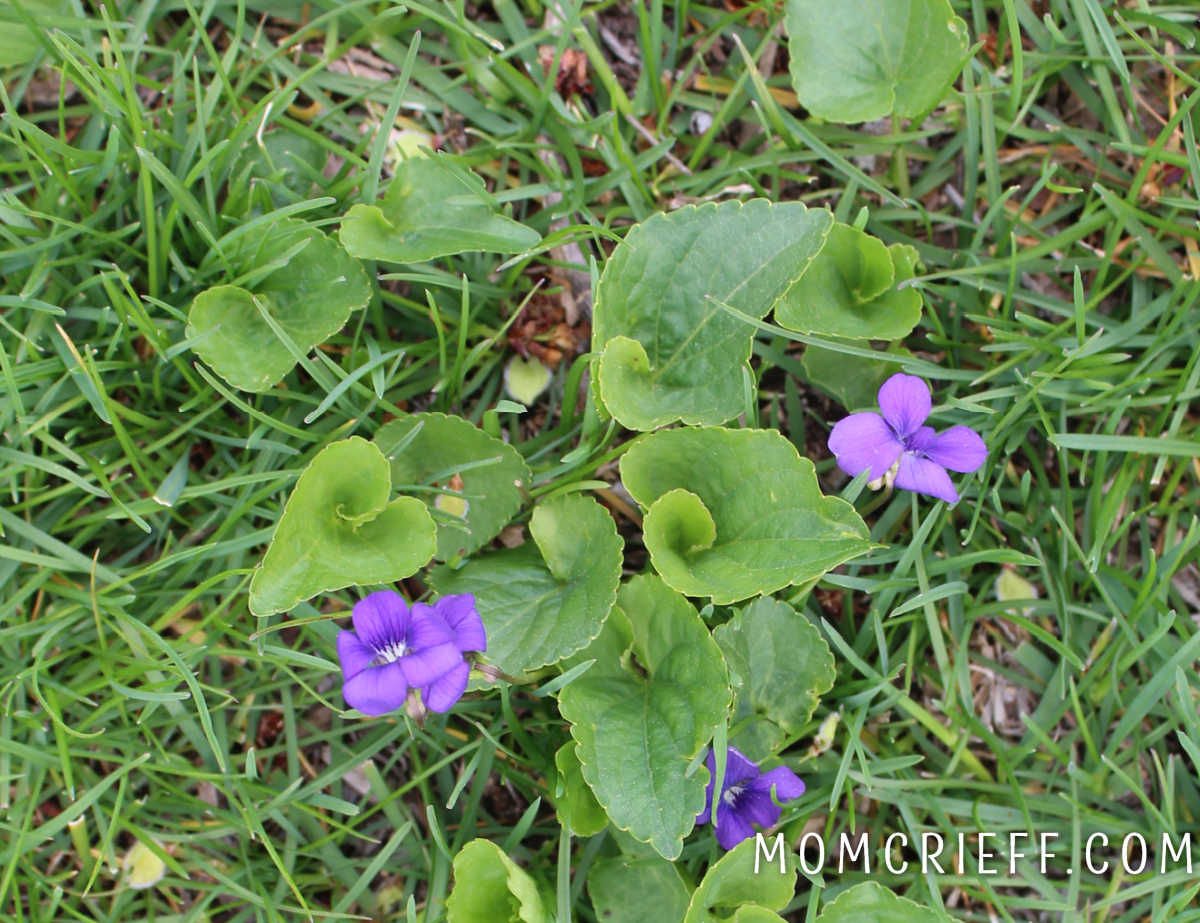
Also known as Wild Violets, this common blue violet is Wisconsin's state flower (where I live). But they are my nemesis. They grow very well in shady areas and become an uncontrollable weed. They are in my lawn, choking out the grass in areas.
Wood violets (Viola sororia) are like the partial sun to partial shade. On my lawn, they seem to do well in full sun, too! These grow in zones 3-9. An interesting thing about these plants is that the leaves don't all die back in the fall or winter. It's a tough plant. The big plus about these wild violets is that they bloom in the early spring and are enjoyed by pollinators.
Siberian Squill
The (Scilla siberica) is another pretty but invasive spreading weed. You have likely heard the definition of a weed as a plant that grows where it isn't supposed to, right? This one grows early in the spring and can cover lawns with its pretty flowers. The problem with Siberian squill is that it's invading our woodlands and squeezing out our native growing plants. The growth zones are 2 - 8. Do not buy or plant this if you see it sold in a garden center.
I have a whole post about Siberian Squill if you would like to know more about this pretty weed.


Lily of the Valley
Another invasive plant that is still sold in some gardening centers. Don't buy or plant this!! Although not banned for sale in Wisconsin, it is on a 'watched list' and may be banned as a plant sold at nurseries.
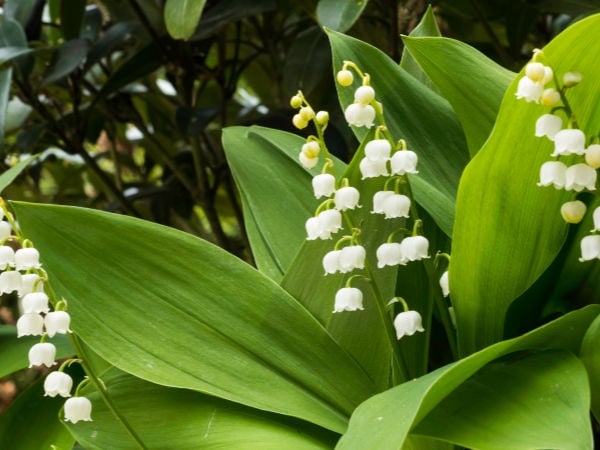
It will spread. I am guilty of having some of these, but a small area of plants is trapped between my house and my cement driveway. I have dug them up, hoping to eliminate them, but they keep returning! I'll admit I do like them and think they are pretty. The Lily of the Valley (Convallaria majalis) grows in zones 2 to 9 and is an early spring bloomer. I love the little white bell-shaped flowers.
Sweet Woodruff
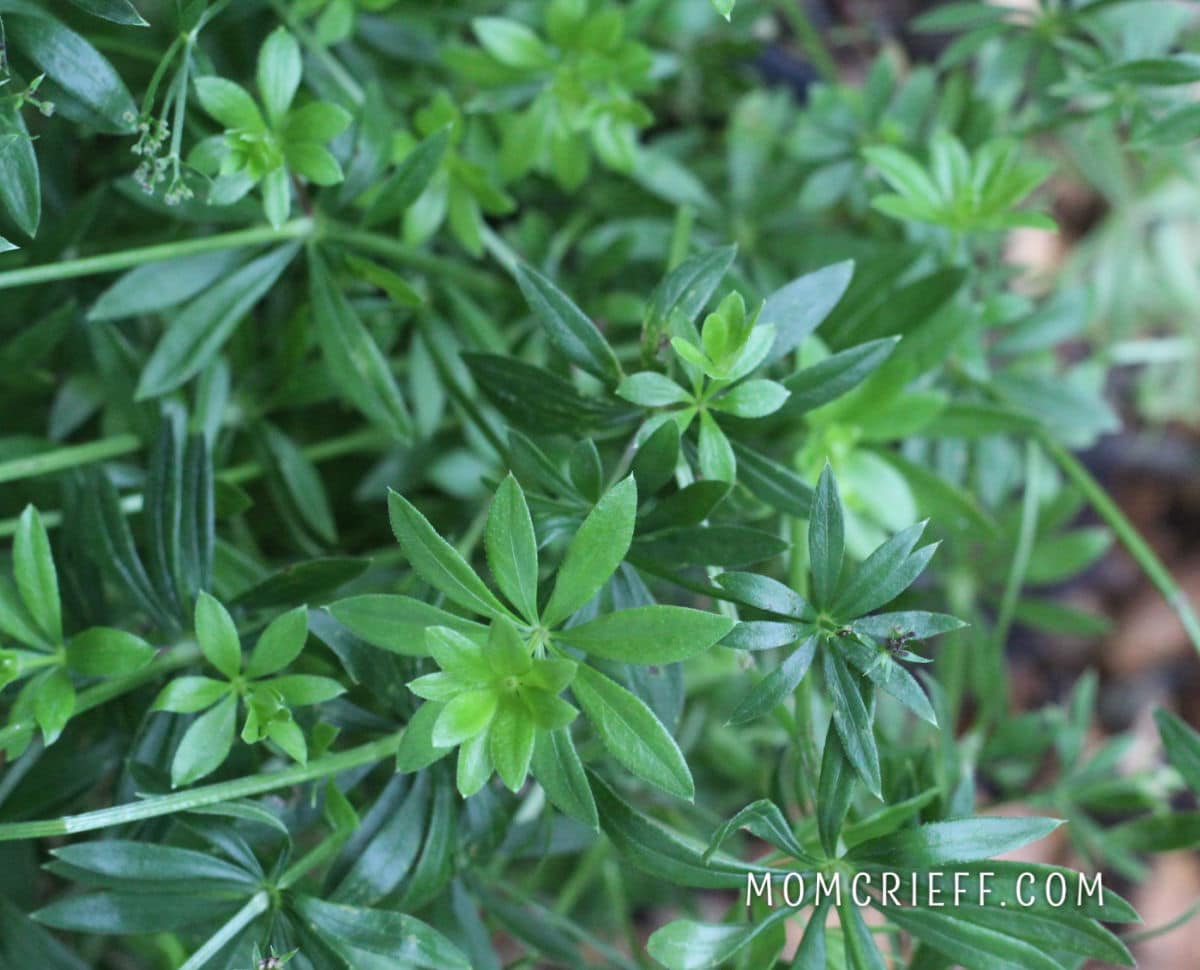
This is a ground cover that can become invasive. It is a perennial in zones 4-9 and likes partial to full shade. I have one of these and am watching to see what it does in my yard. When purchasing plants, I wish growers/retailers would warn consumers about a potential issue growing out of control. What I like about this plant is the fun shape of the leaves. It also blooms in early spring with white flowers. I LOVE spring bloomers!
Dogwood Shrubs
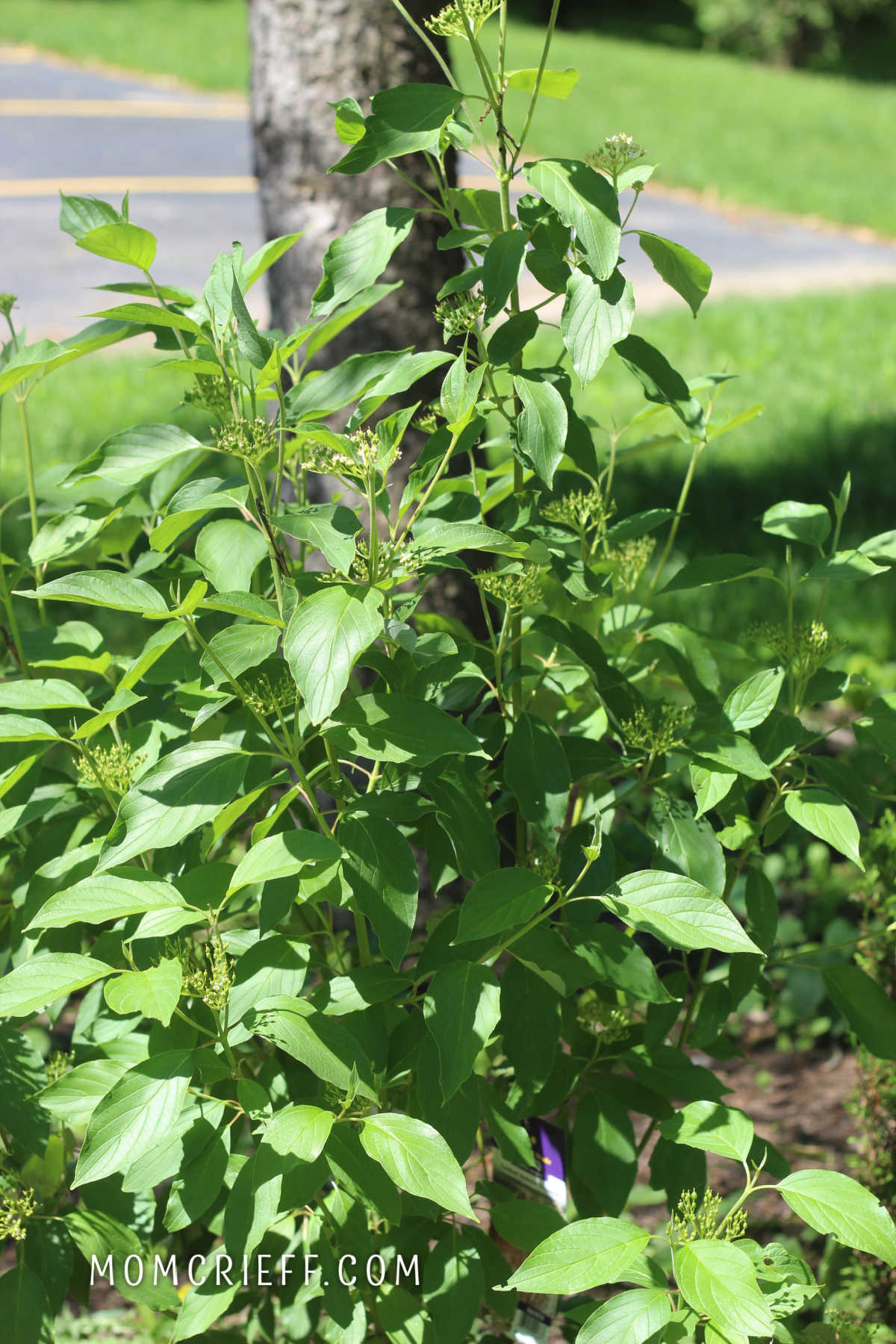
The technical name for my dogwood is Cornus sericea (cardinal redosier dogwood). I've been looking for a shade-tolerating shrub to plant as a natural privacy fence. There are many types of dogwoods, so research a little and/or read the tag to make sure you are buying one that does what you would like and will grow well where planted.
I love dogwood shrubs for two reasons. One, they grow quickly and are an excellent privacy shrub. Second, I only buy dogwood shrubs that get red stems in the fall. I can use those red stems in my winter planters. The red stems also provide some winter interest and still do a good job as a privacy barrier when all the leaves have been dropped.
FAQs
Make friends with people who have shade gardens! Many of my perennials have been shared with me. Offer to dig or split them, and people will be happy to share if you do the work!
Others I buy when they are small, so I have to wait a year for them to flower. Or, buy them when they are on sale at the end of the season.
Aggressive plants spread easily, but they are native to your growing area. Invasive plants spread, but they are not native. These are the more concerning plants.
More shade plant information
Please pin this to your Pinterest gardening boards!
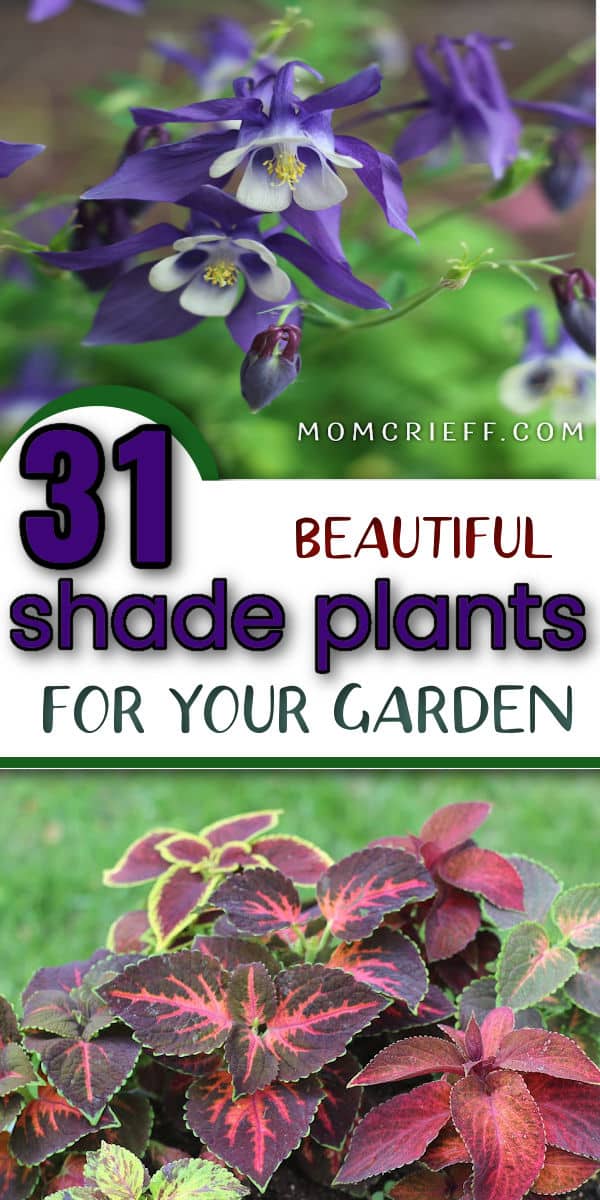



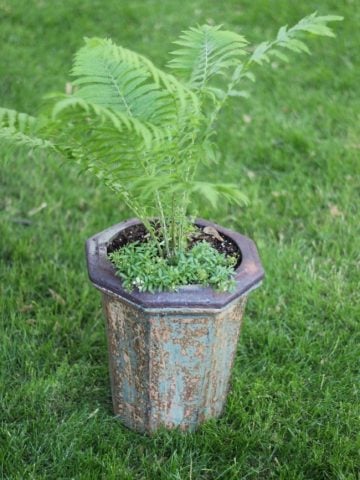
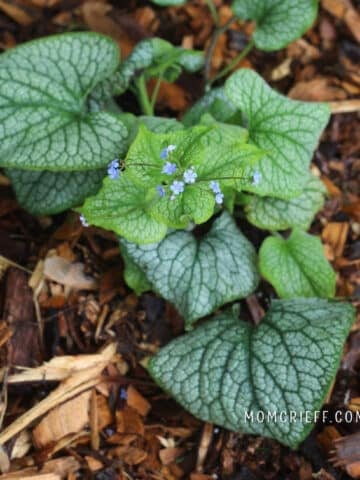
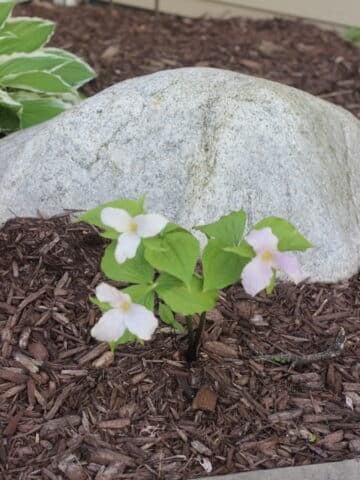
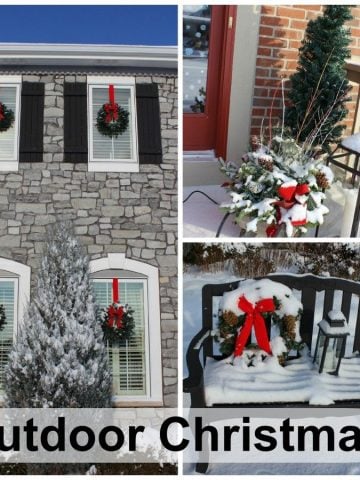

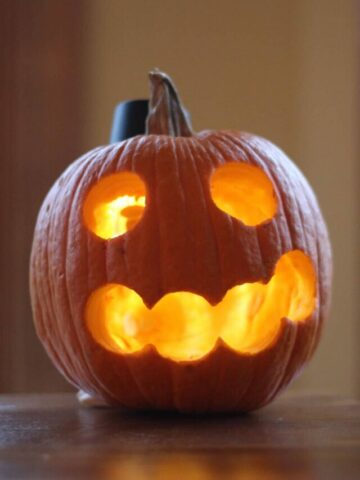
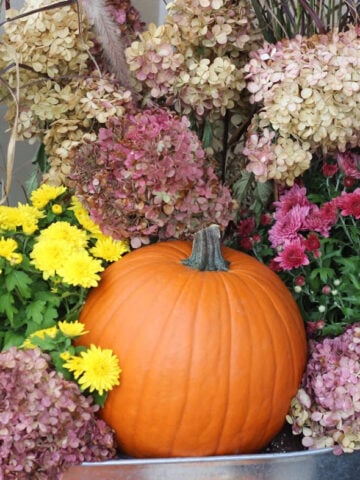
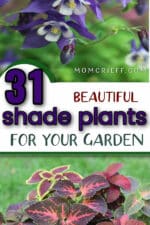
Christina R
Very helpful information. Your plants look so healthy.
Sara
Great post! Trillium is our Provincial flower and I had no idea there were different colours!
Anita Holland
So many pretty plants to choose from, I love the hostas ones they will be on my list next time I go to the garden centre.